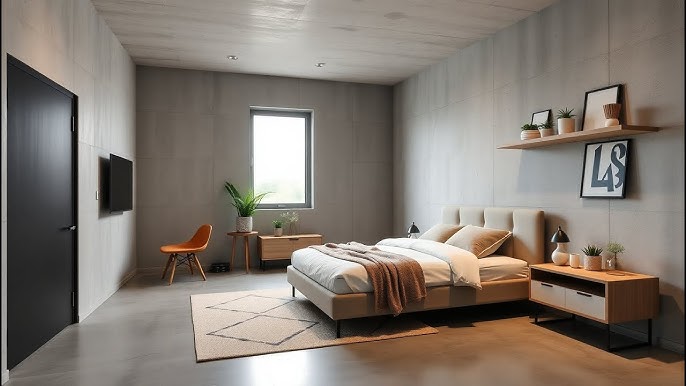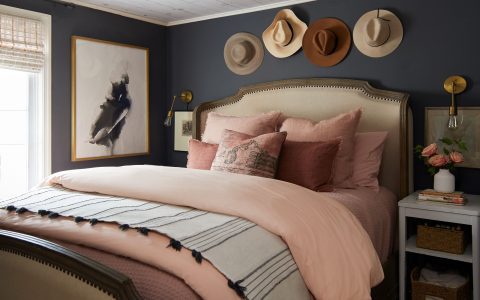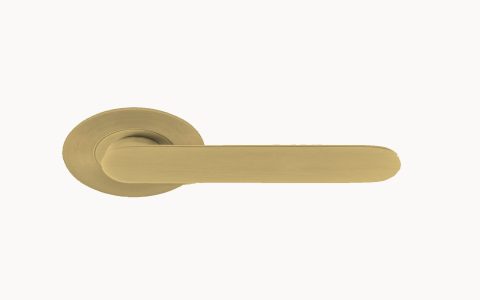A concrete bedroom utilizes concrete as a primary material for surfaces such as walls, floors, and sometimes even ceilings or built-in furniture. This approach lends itself to minimalist, industrial, and contemporary aesthetics, offering a unique departure from traditional bedroom designs.
Key Advantages of Concrete in Bedrooms
- Durability and Longevity: Concrete is exceptionally strong and resistant to wear and tear, ensuring a long lifespan with minimal maintenance requirements.
- Thermal Mass: Concrete has excellent thermal mass properties, meaning it can absorb, store, and release heat. This helps in regulating indoor temperatures, potentially reducing heating and cooling costs.
- Aesthetic Versatility: Far from being monolithic, concrete can be finished in various ways – polished for a sleek look, matte for subtlety, board-formed for texture, or stained for color. This allows for diverse design expressions.
- Sound Insulation: When properly implemented, concrete can offer good sound dampening qualities, contributing to a quieter and more serene bedroom environment.
- Hypoallergenic Properties: Sealed concrete surfaces are non-porous and do not harbor dust mites, pollen, or other allergens as easily as carpets or other materials, making it a good choice for allergy sufferers.
Design Strategies for a Successful Concrete Bedroom
To prevent a concrete bedroom from feeling cold or austere, thoughtful design strategies are essential:
- Introduce Warm Textures: Juxtapose the coolness of concrete with soft, warm materials. Think plush area rugs, luxurious bedding (velvet, linen, chunky knits), heavy curtains, and upholstered furniture.
- Incorporate Natural Wood: Wooden elements, whether in flooring accents, furniture, shelving, or decorative pieces, introduce natural warmth and visual contrast to concrete surfaces.
- Strategic Lighting: Layered lighting is crucial. Combine ambient lighting with warm-toned task lights (bedside lamps) and accent lighting to create a cozy and inviting atmosphere. Dimmable lights offer flexibility.
- Color Palette: While concrete often implies a neutral palette, introducing accent colors through artwork, textiles, or select furniture pieces can add personality and warmth. Earthy tones, deep blues, or warm metallics work well.
- Consider Concrete Finishes: Opt for finishes that enhance comfort. A honed or lightly textured concrete floor can feel softer underfoot than a highly polished one. Underfloor heating can also be integrated.
Potential Considerations
While offering many benefits, there are aspects to consider:

- Perceived Coldness: Without adequate balancing elements, concrete can feel visually and physically cold. This is mitigated by textiles, wood, and proper heating.
- Acoustics: Hard surfaces can lead to sound reverberation. Strategic use of soft furnishings, rugs, and acoustic panels (if necessary) can manage this.
- Installation and Cost: Pouring and finishing concrete, especially for bespoke applications, can be more complex and potentially costlier than some conventional materials, requiring skilled labor.
- Hardness: Concrete floors are unyielding. Area rugs in key zones are recommended for comfort.
Ultimately, a concrete bedroom can be a sophisticated, durable, and stylish space. Success lies in balancing the raw nature of the material with elements that introduce warmth, texture, and comfort, creating a uniquely personal and modern sanctuary.







